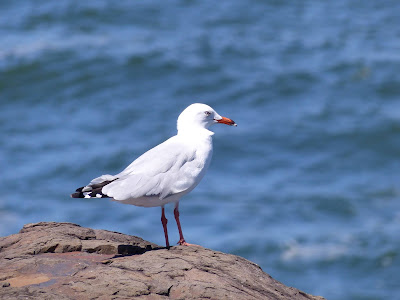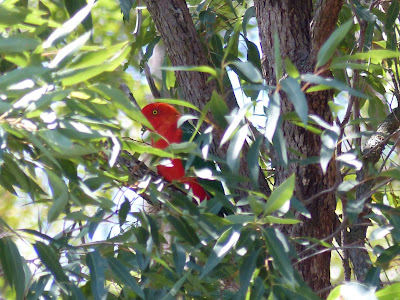As noted previously, and thus confirming that reality for me, Ballina Waal seldom fails to reward a walk with several (or more!) examples of water & land birds to delight the eye ... not just teh bird, but often the scene in which they are observed and photographed. These are all favourites of this location, and they continue to present a sense of marvel. I hope you enjoy another taste 😀.
Seems I had taken a bit of a shine to the silver gull in March! This time having the good fortune to see one atop a wall boulder keeping a sharp eye on the clear waters of the incoming tide (two differing perspectives in the first and final one of the sequence). The middle two offer two variations of wing span - taking off, and landing.
Next is a white-faced heron showing a trace of it's wandering iwth tracks inthe wet sand, Notable also for the emerging breeding plummage (longer feathers behind the head and the along the wings) including the irridescent purplish feathers starrting to show on the breast. Once again the variations that are apparent from the standard "grey" are really magnificant when you get the cahnce to observe them 😊.
I decided to share this undercarriage view of a tern in full glide mode as it shows the sharp "hunter" lines of the wingspan and the piecing beak and tailed fanned to control the glide. The mid-wing joint is very clear and once they dive, the wway that joint allows a deep "V" as the outer portion is pulled back and the inner part tucked back along the body to become an attack missile is something to behold ... as is the ability to flatten again and pull-out if the prey becomes inaccessible. Watching a flock of these hunt is a sight to behold - carnage for the fish!
Next is a couple of shots of a female splendid fairy wren. The "tell" is the hint of blue that is most evident in the second photo. Notice the slight parting of the beak in the first photo indicating the chirp that is a dead give-away when these little ones are active (you nearly always hear them and they are quite curious if you then stop still they are easy to spot and observe).
Wading in the weed as the shallows being to fill is this egret. I'm pretty sure this is the great egret due to the obvious length of the neck being significantly longer than the body. The reflection also adds a nice touch to the image and shows how stealthy they are in movement because of the absence of ripples in the mirror surface. I really enjoy watching the egret hunting ... stalking, I think is a much better description ... take the time if you see one and see what I mean.

If the wren is not shy if you atand still and watch, the willy wagtail is even more "willing" to get to know you and even show-off and talk with you 😉. These rank as two of my very good shots of these fellows. Their shiny black feathers and bright white breasts caoture the sinlight really well and blue of the incoming tide offers a wonderful congtext for the background. The white eyebrow and chin white spots are also nice and clear. I like that second photo offers a pose where the bird seems a little annoyed to have it's feathers ruffled by the breeze!
Here is a nice glimpse of a little pied cormorant through the branches and leaves of a wall-side mangrove. The perch on the thick branch overhangs the weeds (evident in the earlier shot of the egret also) allowing both a warm drying spot for preening and a good view in case some morsel shows itself.
Another fairy wren I wanted to share because the perch on the rock with the single shoot of fresh green grass offers a different and less dry and barren background than the earlier ones in this post.
Rarely does the wall disappoint and not offer a glimpse of a sacred kingfisher. Here I offer two perspectives looking out across from boulders across the weeds/reeds, with the thrid photo showing some debris picked up from one of the raids 😕. Beautiful creatures with such iridescence. Watching them skim the water as they hunt is such a contrast to the patient stalk of the egret noted earlier. Room for all types and approaches in this environment!



Finally for this post I offer a selection of a striated heron. Not often you see these so exposed, but nearly always when you notice them they are very still for extended periods. I offer these as a variety of poses to show the ease with which they camouflage (the wider view shots) but also the subtle variations in colour of their plummage (the closer shots). One also offers a glimpse of a tongue protuding. I like the way the incoming tide relfects the light and ruffles in teh final two shots offering a fabulous background. Each bird has its own beauty!
And so ends March 2019 ... quite the variety and a surprise just how much ground was covered. May it continue.
























































